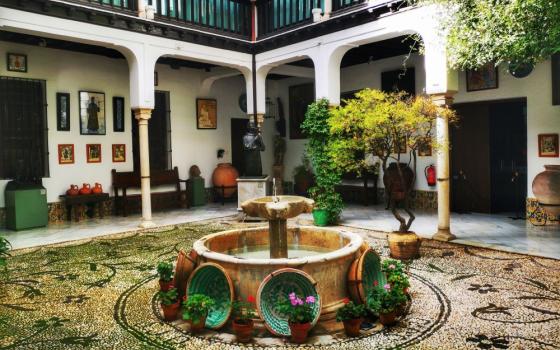The Cologne archdiocese, Germany's largest and the world's richest diocese, has for the first time published its financial accounts revealing assets of 3.35 billion euros ($3.82 billion) at the end of 2013.
The assets were essentially bound in reserves to cover long-term obligations, vicar-general Stefan Hesse said when he presented the accounts at a press conference on Ash Wednesday.
At the end of 2013, the archdiocese was in possession of 2.4 billion euros ($2.73 billion) worth of stocks, funds and company holdings and 646 million euros ($736 million) of tangible assets, including schools and conference buildings. Reserves for long-term obligations and risks amounted to 1.66 billion euros ($1.89 billion). Pension reserves for the archdiocese's 4,000 priests came to 410 million euros ($467 million).
In 2013, the archdiocese received 573 million euros ($503 million) from church taxes paid by the 2 million Catholics belonging to the Cologne archdiocese. After expenses such as church employee salaries had been subtracted, the archdiocese had a surplus of 59 million euros ($52 million).
Although the Cologne archdiocese has now fulfilled its promise that it would make its finances transparent, the figures did not reflect the real estate and assets of the archdiocese's 550 parishes, Hesse said. Like Caritas and other church organizations, parishes are independent legal entities and manage their finances themselves, he said. He appealed to all church communities to publish their accounts.
The Cologne archdiocese's head of finance, Hermann Schon, said publication of the accounts was "a big step toward financial transparency."
In the long run, however, "the church will have to consider very carefully how much money it spends and what it spends it on, as the income from the church will sink," Hesse said. The church will not be able to keep the "huge amount" of real estate that is now in its possession and would have to start selling buildings, he said.
German dioceses have been under considerable public pressure to publish their accounts since October 2013, when it was revealed that the Bishop of Limburg, Franz-Peter Tebartz-van Elst, had spent an estimated 31 million euros ($35 million) on renovating his bishop's palace, including 15,000 euros ($17,000) on his own private bathtub.
The revelation plunged the German church into a deep crisis. Thousands of German Catholics officially left the church as they were no longer prepared to pay the compulsory German church tax of up to 9 percent of their net income, which is withdrawn by the state and passed on to the church. Church collections plummeted. The Christmas collection for the German aid organization Adveniat, which donates large sums to Latin America, was only rescued by a special appeal from Pope Francis to give generously.
As a result of the Limburg crisis, German dioceses began to publish their finances to make clear that they were not using church taxes for luxuries.
"The entire Catholic church in Germany has been immensely damaged," Cologne Cardinal Rainer Maria Woelki said.



